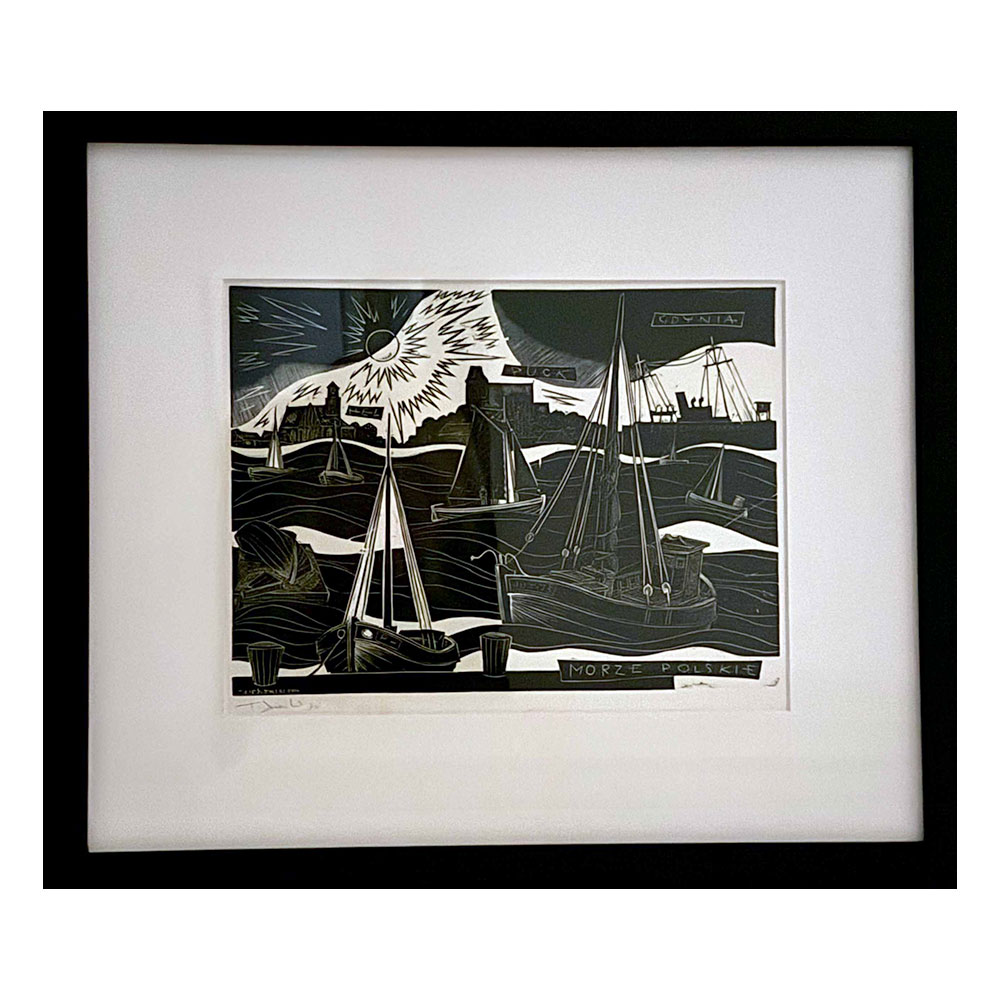Additional information
| Weight | 2 lbs |
|---|---|
| Dimensions | 16 × 13.75 × 1 in |
Tadeusz Cieślewski Jr.
Port in Puck | Port w Pucku, woodcut | drzeworyt, 1933 (copy) – 16 X 13 3/4
Auction Ended
Item condition: New
| Weight | 2 lbs |
|---|---|
| Dimensions | 16 × 13.75 × 1 in |
Auction has finished
Auction failed because there were no bids| May 1, 2024 12:00 am | Auction started | ||
Sail on Lake Michigan
Embark on a breathtaking adventure with this exclusive opportunity to sail on the majestic waters of Lake Michigan. Picture yourself aboard a luxurious sailboat, gliding gracefully across the shimmering surface of one of North America’s Great Lakes. Feel the gentle breeze caress your skin as you bask in the beauty of the surrounding landscape. This auction offers the chance to experience the tranquility and serenity of sailing firsthand, accompanied by a seasoned captain and crew who will ensure your safety and comfort throughout the journey. Whether you’re seeking a romantic escapade, a family outing, or simply a peaceful retreat into nature, this sail on Lake Michigan promises an unforgettable experience filled with awe-inspiring vistas and cherished memories. Bid now to seize this extraordinary opportunity and set sail on an adventure of a lifetime.
Sail on Lake Michigan
Embark on a breathtaking adventure with this exclusive opportunity to sail on the majestic waters of Lake Michigan. Picture yourself aboard a luxurious sailboat, gliding gracefully across the shimmering surface of one of North America’s Great Lakes. Feel the gentle breeze caress your skin as you bask in the beauty of the surrounding landscape. This auction offers the chance to experience the tranquility and serenity of sailing firsthand, accompanied by a seasoned captain and crew who will ensure your safety and comfort throughout the journey. Whether you’re seeking a romantic escapade, a family outing, or simply a peaceful retreat into nature, this sail on Lake Michigan promises an unforgettable experience filled with awe-inspiring vistas and cherished memories. Bid now to seize this extraordinary opportunity and set sail on an adventure of a lifetime.
Marjorie Baer
For over 45 years, Marjorie Baer has been designing modern, sculptural jewelry that appeals to a wide range of women. Each piece is hand-made by artisans in the San Francisco Bay Area from quality materials with craftsmanship and attention to detail.
Marjorie Baer jewelry has a unique look. Her designs are elegant, architectural, bold, and distinctive with easy balance, dramatic movement, and light-weight layers. She has become known over the years for her eye for mixed metals. Marjorie’s collection is comfortable and hypoallergenic to avoid irritation even on the most sensitive skin. Marjorie Baer’s jewelry is a staple for women who value unique and eye-catching pieces that compliment and enhance their own personal style.
All Marjorie Baer jewelry is made sustainably and ethically in our South San Francisco studio.
